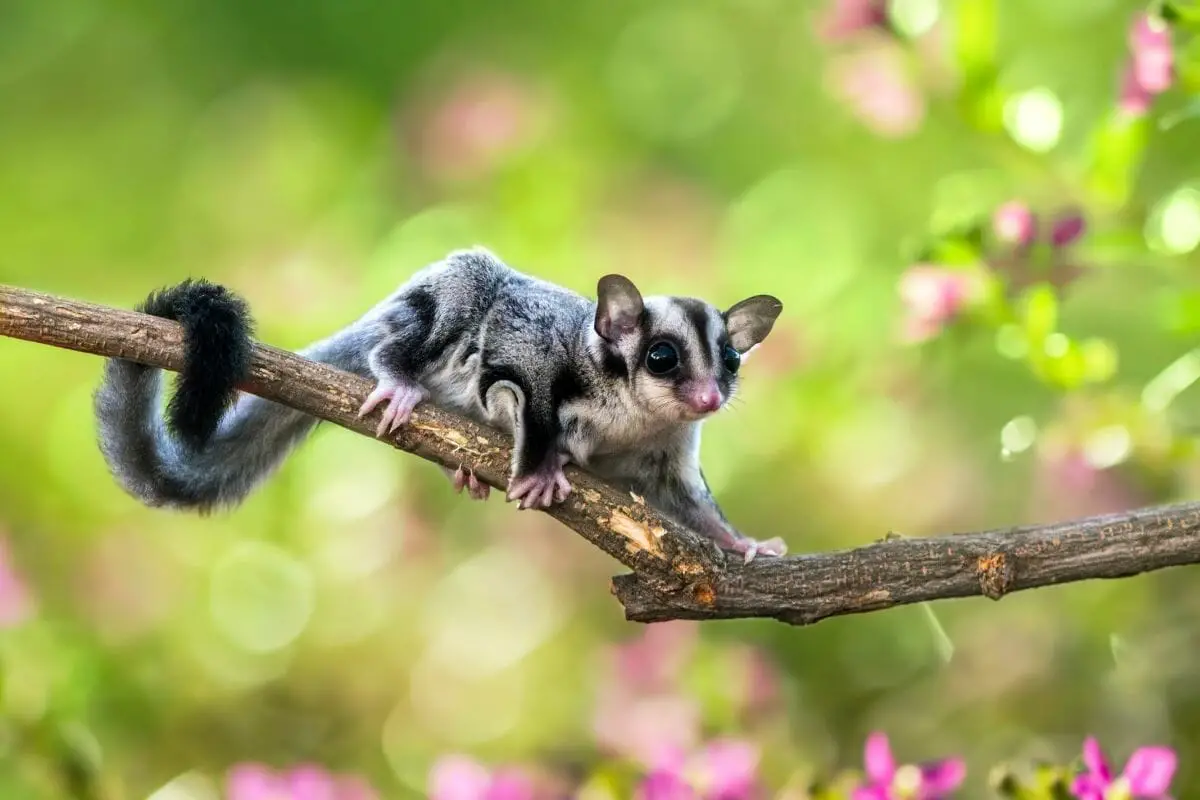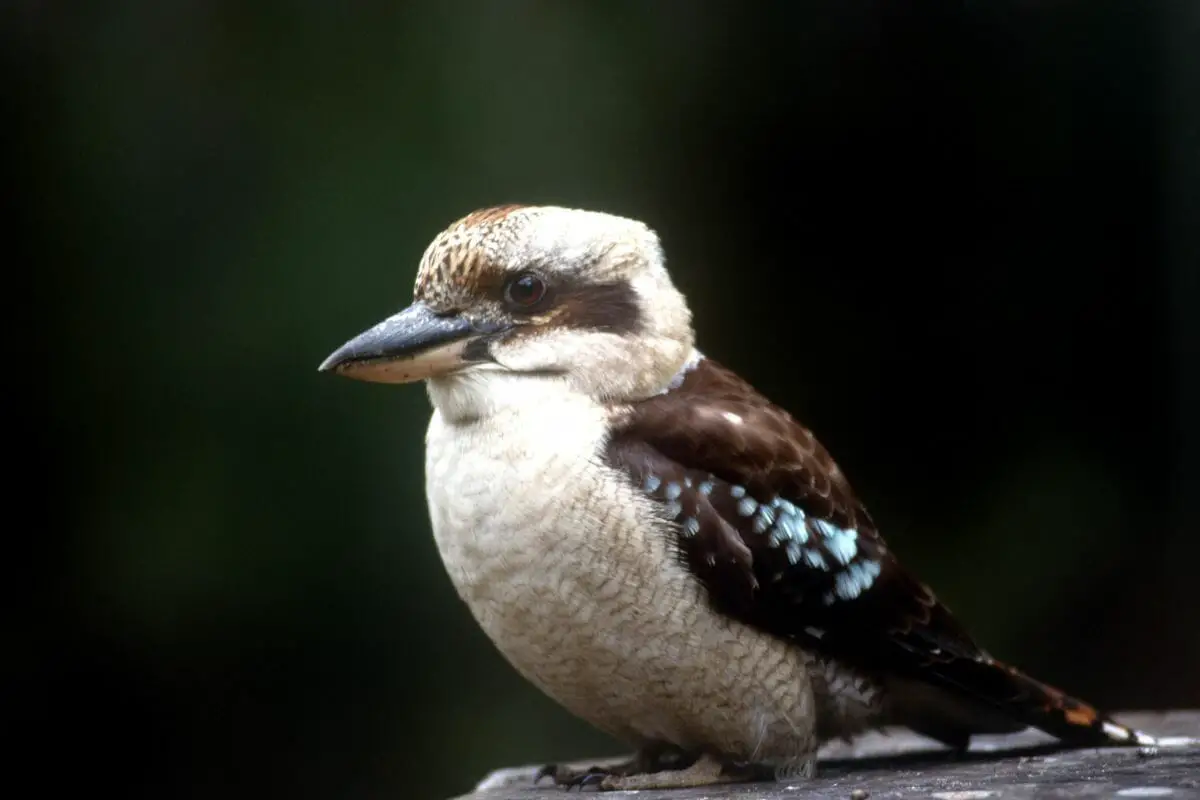Sugar gliders are a well loved, popular animal, thanks to their cute appearance, and unusual physicality that allows them to literally glide from treetop to treetop.

But what exactly does their lifestyle look like, and what does their diet consist of?
Where Are They Native To?
Sugar gliders are widely located around Australia, Tasmania, and some parts of southeast Asia, and have since become one of the most loved animals on the planet.
Are They Rodents?
Many confuse sugar gliders as rodents, due to their small size and physical characteristics, however they are actually a relative of the opossum, and are members of the marsupial family.
They could easily be confused for a rodent or small mammal, as their physical appearance and bodily dimensions resemble those of squirrels.
However, their distinct pouch (in females) is a dead giveaway for their true taxonomy.
What Do They Eat?
Sugar gliders are omnivorous, and they will generally eat whatever they come across, depending on their location and the situation at hand.
They tend to forage in the lower layers of the tree canopies, where they can drink from stored rainwater pockets, and consume the countless insects that call trees their homes – such as termites, ants, and various forms of beetles and worms.
They also feed on the sap and gum from various trees, a practice that sustains them during the winter months when insects can be scarce.
They have also been known to eat fungus, acacia seeds, nectar, bird eggs, pollen, and even native fruits.
When it comes to accessing the sap and gum from trees, they will either strip the bark away with their teeth, or bore a hole into the surface to get their desired treat.
When it comes to insects, they spend very little time actively hunting, instead waiting for insects to wander into their habitats to feed.
This is not only an easier process, but it also saves a lot of energy that would otherwise be expelled during hunting.
As well as being insectivorous, they can also be carnivorous scavengers when desperate enough, and have been known to consume small lizards and even small birds that they happen across.
What Predators Do They Have?
Of course, as with any creature, the sugar glider has its share of predators.
Owls
Owls are the most prominent predator of the sugar glider, and have an advantage to most types of creatures due to the fact that they share a lot of habitats with the sugar glider.
Goannas
These large monitor lizards generally eat dead animals, but have been known to attack and kill live prey when they are desperate enough.
It can be quite difficult for goannas to catch sugar gliders when in the trees, but when they land on the ground they can become vulnerable to these gigantic creatures and their ferocious appetites.
Snakes
Snakes have the advantage of being able to not only hunt on land, but also slither up trees in search of birds eggs and small mammals/marsupials – like the sugar glider.
This makes snakes one of the most dangerous predators that gliders have, and makes them a constant threat, particularly to the young once they have left their mother’s pouch.

Kookaburras
Kookaburras are also known as tree kingfishers, and they share a lot of the same habitats as the sugar glider, making them one of their main predators.
This might seem unusual, as we consider the kingfisher to be smaller than a marsupial, however their sharp beaks and carnivorous appetites make them dangerous to all small mammals.
Quolls
Quolls are large, carnivorous marsupials found throughout Australia and New Guinea, and are about the size of an opossum.
This makes them dangerous to smaller marsupials like sugar gliders, which can often fall prey to their meat eating ways.
Feral Cats
Feral cats are also a significant threat to sugar gliders, as they can climb trees and use sufficient stealth tactics to sneak up and capture small marsupials and mammals.
Feral cat attacks are less common than the other predators on this list, but they pose a risk nonetheless.
Is Gliding An Advantage?
The gliding ability of the sugar glider is an advantage, both in terms of escaping danger, and in finding food and new sources of shelter.
Especially in Australia, where forest fires are regular occurrences, the ability to glide means that sugar gliders can escape from danger with little to no problem – although depending on the veracity of the fire they might not have anywhere to escape to.
When it comes to finding food, the gliding means they can travel from tree to tree, moving on when food supplies become scarce or completely spent.
They can also look out for insect hives and move trees where necessary to feed.
If the sugar glider is awake and alert, then gliding can even help them escape from predators, particularly the ones that can climb trees but which cannot fly – such as snakes.
If a particularly wily sugar glider has the foresight and time, they can glide to another tree – or similar safe location – before the snake can dish out their fatal attack.
Other Advantages
Sugar gliders are also incredibly social creatures, often living in colonies of up to seven or eight others.
This means that they are safer from predators than other marsupials, and stand more of a chance of noticing danger before it strikes.
This also comes in handy when it comes to feeding, spreading their energy and skills to find sustenance.
Final Thoughts
And there we have it, everything you need to know about sugar gliders, and the way they sustain themselves in the wild.
Sugar gliders are curious creatures, and are unlike anything else in the animal kingdom.
When combined with their cute appearance, and their soft furry bodies, there is little wonder that they are so loved amongst animal enthusiasts everywhere.
- 15 Most Common Animals Living In Ponds - 2024-04-23
- What are the Characteristics Of a Wolf – (Characteristics & Interesting Facts) - 2024-04-23
- Animals That Live In The Abyssal Zone - 2024-04-22








